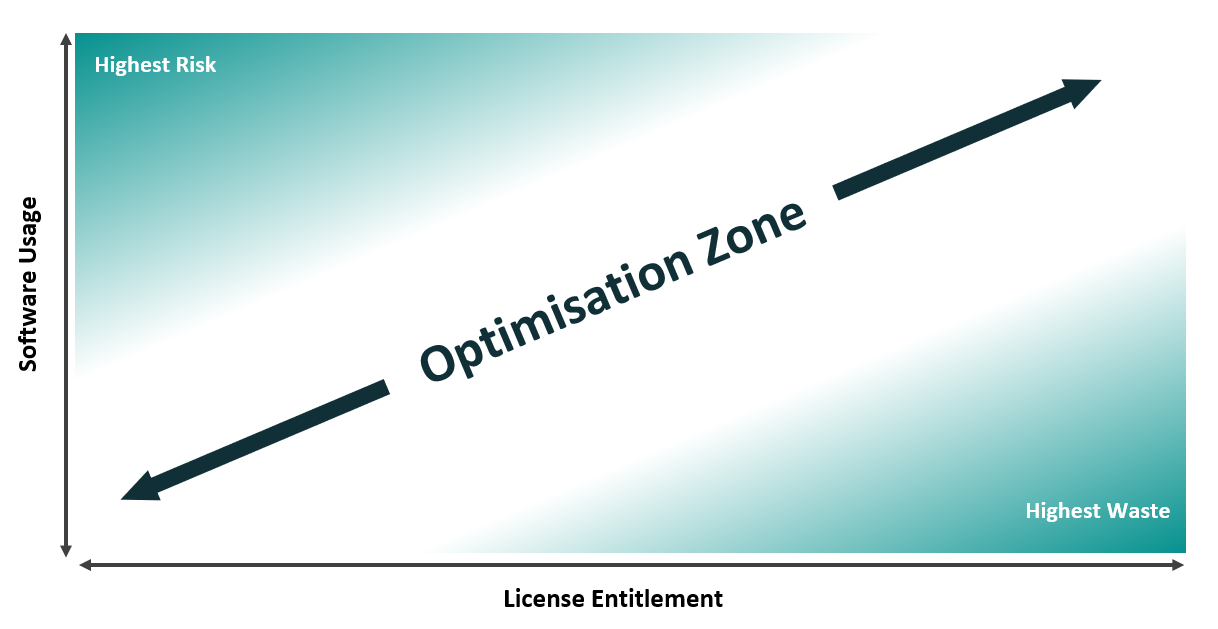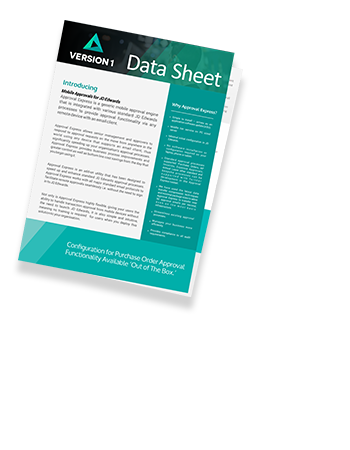What is License Optimisation?
License Optimisation is the pursuit of the perfect balance of maintaining a software entitlement inventory which matches your software consumption.
The output of this exercise is known in the industry as an Effective License Position (ELP). Think of it this way; if ELP is the headache (which it can be), then License Optimisation is the medicine to manage the pain.
An ELP will tell you (at a point in time) whether you are under, over or correctly licensed. What it does not tell you, however, is what you can do to address the imbalance. The license optimisation steps you take will depend on the result in the ELP.
Over Licensed
Over Licensed essentially means that you are entitled to more software than you are currently using. How you manage this scenario will depend on several organisational factors:
- Will you have the potential to use those licenses in the future? If so, keep hold of them, but be sure to verify the associated cost for retention – you may be paying support and maintenance on something you are not using.
- Could you use those licenses within another area of the business or another entity? If the latter, verify the right to use is applicable either through a grandfathering right or one explicitly granted to that entity.
- If you are sure you don’t need them, then you can look to remove those licenses from your inventory. Your success here will depend specifically on the vendor associated with the licenses and the contract type under which they were purchased. Certain vendors create complex mechanisms to lock you into continue paying for software you are not using.
- If you know you need additional licenses for alternate software from the same vendor, you could look to migrate those licenses or use as part payment for the new licenses. Once again, this will depend on the specific vendor and their migration/transfer policies in place.
Under Licensed
Under Licensed means that you are using more software than you are entitled to, which is the most common scenario that we encounter in our daily engagements. What you can do will be again dependent on a number of factors;
- You can buy additional licenses from the relevant vendor to cover your shortfall. Bear in mind here that a direct conversation with the relevant vendor could, in fact, pique their interest in you and result in an audit request. Often it is better to ask a trusted partner to make those enquiries on your behalf which provides a degree of separation.
- You may be able to novate licenses from other areas of the business/entity to cover your shortfall. Once again this activity in itself can pique the interest of the vendor and result in an audit request.
- You may be able to adjust how you calculate your license position so that it takes advantage of certain features within the vendor’s licensing policy. Licensing rules are often open to interpretation.
- You may be able to utilise terminology in a historical license grant which at a later date has been refined by the vendor. For example, the definition of what constitutes “a processor” has changed for many vendors over time as the power of processors has grown and the technology for multi-core chips has improved. Using a looser definition for certain parts of your estate may cover off the perceived shortfall.
- You can seek a technical solution to your under-licensing. It may be possible to re-architect the underlying component configuration such that the calculation results in a different outcome. An example of this could be a physical separation of a virtualisation cluster or a move to an approved virtualisation technology.
- You could turn off/de-install the relevant software that is being overused. This course of action has potential ramifications and will be one that you should consider carefully and within the context of your company policies and appetite for risk. Software installations often leave fingerprints and/or high watermarks which will be evident in the event of audit. An explicit act to avoid payment for utilised software may attract the attention of authorities outside of the original vendor.
Those are examples of some potential license optimisation solutions to the two perspectives of an ELP. Often the situation is never black and white and you will find yourself enjoying several combinations of optimisation solutions to the same problem, and then, there is the commercial perspective to overlay on top of every solution suggested.
For example, perhaps you are under licensed and you choose to purchase additional licenses to cover the shortfall. Knowing when a vendor is likely to be offering extra discounts or incentives can work in your favour. The same is true for having additional software to purchase. Perhaps you have a big project coming up for which you need additional or new software, you can always tack on your additional purchase requirements to that order and enjoy bigger discounts from a larger order.
The graphic below illustrates the two ELP perspectives; high software usage with low license entitlement creates the highest risk, whereas low software usage and high license entitlement creates high waste. The Optimisation Zone is a perfect balance between usage and entitlement.

It’s also worthwhile remembering that when producing an ELP you are essentially recording a state in time that is historical as soon as you publish it and every day that passes after the publication of that ELP sees you and your position drifting away from that position. License optimisation is the ongoing ‘check and balance’ to ensure your position is continually maintained and doesn’t drift.
As ever in the world of software licensing, what seems simple on the surface becomes more and more complicated as you peel back the layers of options. A trusted advisor will be able to help you navigate the options that best suit your specific circumstance.
About Version 1
Our independent licensing consultants (covering all aspects of enterprise licensing) provide expertise to customers globally, ensuring customers get the best value from their assets. If you would like more information about mitigating against the cost and risk of License Audits, get in touch with the independent licensing experts at Version 1 today.



WHITEPAPER
Cloud Economics Assessment
Accurately assess your Azure Requirements with a Cloud Economics Assessment.
Cloud Economics Assessment